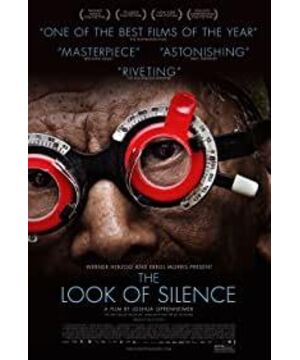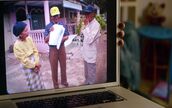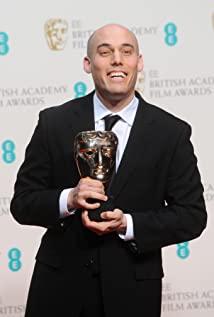I saw three versions of the story:
Version One :
In 1965, the protagonist’s brother was butchered twice. For the first time, his stomach was slashed and he stumbled across the field and fled home. At night, he whimpered and asked his mother for coffee. The next day, the murderer came again, snatched the dying him from his mother, took him to the river, and cut his lower body from behind.
His death was just the particle of a mass murder. This coup, which spread in the name of anti-communism, eventually evolved into a typical case of "banal evil": Nearly one million people were brutally executed, but the murderers believed that they had just fulfilled their duties.
Years later, with the memory of his father and the memory of his mother, the protagonist began to use the director and himself to look around for the murderers and survivors of the year. He found that most of the murderers now live abundance, and triumphantly reproduce the bestiality of the year in the director's lens; he accompanied the survivors back to the Asura Field, silently listening to some prayers aimed at resolving sins.
He asked the murderers a lot of questions, the most important of which was to lead them to repentance in the name of morality and justice. As a result, the grassroots murderers only liked to talk about the details of the killings, while the commanders back then threatened him and no one expressed repentance.
However, there are several functions for the murderer to reach the blood of the dead. According to their memories, because there were too many murders back then, the murderers generally believed that only by drinking dead human blood could they avoid going crazy.
In two search visits, the murderer's family members were also questioned. They all stated that they did not know the evil deeds of their relatives before. In the end, two people apologized, and the other two expressed anger and boredom. The murderer's son with a face full of flesh made sense to the camera: My father killed the parent of a certain family, but for decades, we and that family are still good neighbors, and the wound has long healed. You come to harass me now, you have to pierce the healing scars, what are you going to do?
Another person’s truth is more refined: as long as there are people who remember the tragedy, the tragedy will happen again. This sentence was translated into political language by a certain leader of the year, which is: Whoever is dead in the family will investigate the matter, and who is the hidden bandit!
In the end, the protagonist's father crawled around in his own home: he finally couldn't remember where he was, and he was terrified because of it. The protagonist's mother saw a survivor from the past, put her wrinkled tears on the other's big hand, and choked up: "You are still alive. My son is dead, and you are alive."
She and her husband are quite different. She will never forget the son who was killed twice.
Version 2
In 1965, some people in Indonesian society killed some people.
The director was shocked by the long-lasting elation of the murderers and determined to explore their hearts.
Of course he thought it was a big tragedy. But when he brought the camera closer to the squirming facial features of these murderers, the judgment gradually faded. He observed these faces carefully, and was deeply surprised by the meaning system they refer to.
Is this something morally judgeable? He gradually asked such a question. So he focused the same observation on the protagonist's tearful face. Is this set of squirming facial features more powerful than the murderer's face?
Mother's solemn face, father's scrawny nakedness, the power of these hot and humid images, are they also participants in the memories of killing? The director watched slowly and presented.
In the end, the story died. The image persists. There is no murderer in it, only faces that you can't understand.
Version 3
In Indonesia, people who dominate are often the killers and beneficiaries of a massacre. Despite all kinds of questions from the victims, they are still proud of their evil deeds. Where is the law of heaven?
- - - - - - - - - - - - -
After the viewing, I learned that the director put on a hero during the tour, they show a scene around to answer questions. The protagonist does not speak foreign languages, so the director will translate for him.
In view of the cruel use of the film's lens (always observing the interviewee's face in a blinding manner), I made a wild guess: on the premise of maintaining a narrative balance, the author seems to be using the third story to attract the topic (with the protagonist on tour) , Pursue artistic height with the first story (the poetic structure spliced by real materials), and his creative passion is probably mainly attributed to the second story.
View more about The Look of Silence reviews







